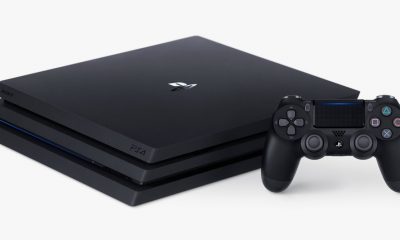The perennial battle between AMD’s Ryzen and Intel’s processors has been a cornerstone of the computing world for years. As technology enthusiasts, gamers, and professionals seek the ideal balance of performance, power efficiency, and value, the choice between Ryzen and Intel CPUs has become increasingly challenging. In this comprehensive comparison, we’ll delve into the intricacies of Ryzen and Intel processors, exploring their architectures, performance metrics, market positioning, and the ever-evolving landscape of the CPU market.
Understanding Architectural Differences
The heart of any processor lies in its architecture, dictating how it processes information and executes tasks. AMD’s Ryzen processors, built on the Zen architecture, marked a significant turning point for the company. Zen brought about a substantial leap in performance and efficiency, challenging Intel’s dominance in the market.
On the other hand, Intel’s processors, traditionally based on the Core architecture, have undergone iterative improvements over the years. However, recent advancements have introduced architectures like Skylake, Kaby Lake, Coffee Lake, and more, each striving to outperform its predecessor in terms of speed, efficiency, and feature set.
Cores and Threads: The Battle for Multitasking Prowess
One of the critical aspects of processor performance is the number of cores and threads. Ryzen processors are renowned for their high core and thread counts at competitive price points. The Ryzen series often offers more cores and threads than their Intel counterparts, providing users with a substantial advantage in multitasking scenarios.
Intel, recognizing the importance of increasing core counts, has responded with processors featuring higher core and thread numbers as well. However, the battle between Ryzen and Intel in this domain is more than just raw numbers. The efficiency of core utilization, cache management, and overall architecture also play crucial roles in determining real-world performance.
Performance Metrics: Benchmarking the Rivals
Benchmarking is a standard method for evaluating and comparing the performance of processors. Tools like Cinebench, Geekbench, and others offer insights into the raw computational power of CPUs. Ryzen processors have consistently shown impressive results in these benchmarks, often delivering robust multi-core performance that outshines their Intel counterparts in certain scenarios.
Intel, on the other hand, has long been associated with strong single-core performance, which is vital for tasks that rely heavily on clock speed. The battle between Ryzen and Intel in benchmarks is not one-sided, as the specific requirements of users and applications play a crucial role in determining which processor performs better in a given context.
Gaming Performance: A Crucial Arena
For many users, especially gamers, the performance of a CPU in gaming scenarios is paramount. Historically, Intel has held an edge in gaming performance due to its higher single-core clock speeds. Games often rely on strong single-core performance, and Intel processors have excelled in delivering the required speed for optimal gaming experiences.
However, recent Ryzen iterations, especially those based on the Zen 3 architecture, have significantly narrowed the gap. The introduction of the Ryzen 5000 series has positioned AMD as a strong contender in the gaming arena, with some processors even surpassing their Intel counterparts in certain titles. As game developers continue to optimize for multi-core architectures, Ryzen’s prowess in multitasking can be a deciding factor for users seeking a holistic computing experience.
Overclocking: Unleashing the Power
Enthusiasts and power users often indulge in overclocking to extract additional performance from their CPUs. Both Ryzen and Intel processors support overclocking, allowing users to push their CPUs beyond stock clock speeds. The effectiveness of overclocking, however, depends on various factors, including thermal management, power delivery, and the inherent stability of the processor.
Ryzen processors, especially those based on the Zen architecture, have earned a reputation for being overclocking-friendly. The unlocked multiplier on many Ryzen models simplifies the overclocking process, making it accessible even to users with limited experience. Intel processors, too, support overclocking, with the K-series CPUs being the primary choice for enthusiasts looking to push their systems to the limit.
Integrated Graphics: A Deciding Factor for Some
Integrated graphics have become increasingly relevant, especially with the rise of compact form factors and systems designed for everyday tasks. Ryzen processors, equipped with Radeon Vega graphics in certain models, offer decent integrated graphics performance, allowing users to engage in light gaming and multimedia tasks without the need for a dedicated graphics card.
Intel’s processors, with their integrated Intel UHD or Iris graphics, also cater to users who prioritize integrated graphics performance. The battle between Ryzen and Intel in this aspect revolves around the specific requirements of users, with some favoring the slightly superior graphics performance of one over the other.
Pricing and Value Proposition
In the fiercely competitive CPU market, pricing plays a pivotal role in influencing purchasing decisions. AMD’s Ryzen processors have gained a reputation for delivering exceptional value for money, often providing comparable or even superior performance to Intel counterparts at lower price points. This has endeared Ryzen to budget-conscious users and those seeking the best performance-to-price ratio.
Intel, historically considered a premium brand, has adjusted its pricing strategy to remain competitive. While Intel processors might still be positioned at higher price points, the company aims to justify this with features, optimizations, and brand loyalty. The battle for market share in the budget and mid-range segments intensifies as Ryzen continues to offer compelling options.
Technological Innovations: Beyond the Cores and Clocks
The competition between Ryzen and Intel extends beyond the core and clock speed race. Both companies continually introduce innovative features and technologies to enhance the overall user experience. Ryzen processors leverage technologies like Precision Boost, which dynamically adjusts clock speeds for optimal performance, and Simultaneous Multithreading (SMT), enhancing multitasking capabilities.
Intel, too, has introduced technologies like Turbo Boost for dynamic clock speed adjustments and Hyper-Threading to improve multitasking. The battle for technological supremacy involves not only introducing new features but optimizing existing ones to deliver tangible benefits to users.
Future Prospects: The Road Ahead
As technology advances, the battle between Ryzen and Intel is far from settled. Both companies are likely to continue pushing the boundaries of CPU performance, introducing new architectures, optimizing existing ones, and exploring innovative solutions to meet the evolving needs of users.
The integration of CPUs with other components, such as GPUs and AI accelerators, is a trend that could shape the future landscape. The battle for dominance in emerging technologies and applications, including artificial intelligence, machine learning, and high-performance computing, will further define the rivalry between Ryzen and Intel.
Conclusion
In the ongoing saga of Ryzen vs. Intel, the choice between these two giants ultimately depends on the specific needs and preferences of users. Ryzen processors, with their high core counts, competitive pricing, and overclocking potential, have disrupted the market and garnered a dedicated fan base. Intel, with its legacy of strong single-core performance and a commitment to innovation, remains a formidable competitor.
Ultimately, whether you prioritize gaming performance, multitasking capabilities, or a balance of both, the decision between Ryzen and Intel should be based on a thorough assessment of your requirements and budget. As the battle for CPU supremacy rages on, users can rest assured that they have a wealth of options, each offering a unique blend of features and performance.


 Mobile3 years ago
Mobile3 years ago
 Gaming3 years ago
Gaming3 years ago
 Tech2 years ago
Tech2 years ago
 Gaming2 days ago
Gaming2 days ago














